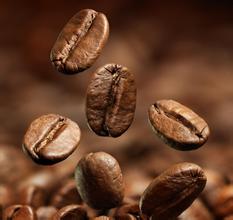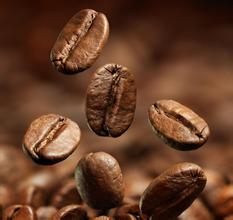Costa Rican (Caturra) Kaddura Coffee is characterized by the taste of regional varieties.
Costa Rican (Caturra) Kaddura Coffee is characterized by the taste of regional varieties.
Costa Rican Ficamie treatment was produced by Los Lobos farm in Tarashu area, 50% honey treatment (honey treatment will be described later), and 9 defects were picked out from 100g raw beans.
Raw beans are covered with something similar to wax, and this treatment is said to increase the sweetness of the beans.
Baked to the verge of the second burst of beans, beans are baked on the 12th, wait until the weekend to have time to take pictures, there has been a little oil.
It smells rich and sweet with a high consistency of coffee and a smooth and mild taste.
After peeling, the peel and pulp of the coffee fruit are recovered as feed for livestock, or converted into organic fertilizer, as well as coffee bean dryer fuel. It can be said that in every process of coffee production, Costa Rica complies with the requirements of maintaining the natural environment.
Among the many excellent producing areas in Costa Rica, there is a famous producing area that stands out-Tarazu (Tarrazu), also known as Tarasu. Tarazhu is very famous in the world of boutique coffee and is one of the major coffee producing areas in the world. In the 2014 COE competition, of the 23 beans on the list, 17 came from Tarasu. Tarasu is located in the fertile volcanic region of Central America, which has a humid climate and fertile volcanic soil, abundant rainfall throughout the year, high altitude, and dense forest natural shade, providing a unique growth environment for coffee growth. Pesticides or artificial fertilizers are not used in the planting process. Nearly 95% of the coffee beans produced in Tarazhu Alpine are very hard beans (SHB), which generally grow above 1500 meters above sea level.
At present, the Tarazhu Cooperative has 26 member estates. Among them, Raminita Manor, which is one of the most famous coffee farms in Tarazu. La Minita produces about 1 million pounds of coffee beans a year, and after the entire estate produces coffee beans that are carefully selected to remove defects, only 15 per cent of the coffee beans can bear the mark of the Laminita estate, while the rest enter the coffee market. But the prices of these coffees entering the market are still higher than those of other beans produced in Central America. Raminita's strict management of all aspects of coffee production has established a world-class reputation and can be called a world-famous coffee farm.

Important Notice :
前街咖啡 FrontStreet Coffee has moved to new addredd:
FrontStreet Coffee Address: 315,Donghua East Road,GuangZhou
Tel:020 38364473
- Prev

Description of Flavor of Red Cherry Sunshine Sidama Coffee beans introduction to grinding scale by taste treatment
Description of flavor of red cherry sunlit Sidama coffee beans introduction of grinding scale by taste treatment method 1. After picking beans without special screening and treatment, uneven appearance and maturity are mixed together, the process is relatively rough, so the quality of coffee beans is unstable and prone to defective beans. two。 Coffee farmers usually find an open space near their home to deal with it, so there is often a lot on the ground.
- Next

Description of the characteristics and flavor of Brazilian Hilado coffee beans the varieties produced by grinding scale
Brazilian Coffee beans characteristic Flavor description Taste Grinding scale Regional varieties currently synonymous with Brazilian Serrado coffee and high-quality coffee, his name has become a world-famous coffee bean beyond Brazil. Caccer (Kaseru: Serrado producers Association) established CACCER (Kaseru) as a link between coffee producers in the state of Minas Gerais, Serrado, Brazil. Ka
Related
- Detailed explanation of Jadeite planting Land in Panamanian Jadeite Manor introduction to the grading system of Jadeite competitive bidding, Red bid, Green bid and Rose Summer
- Story of Coffee planting in Brenka region of Costa Rica Stonehenge Manor anaerobic heavy honey treatment of flavor mouth
- What's on the barrel of Blue Mountain Coffee beans?
- Can American coffee also pull flowers? How to use hot American style to pull out a good-looking pattern?
- Can you make a cold extract with coffee beans? What is the right proportion for cold-extracted coffee formula?
- Indonesian PWN Gold Mandrine Coffee Origin Features Flavor How to Chong? Mandolin coffee is American.
- A brief introduction to the flavor characteristics of Brazilian yellow bourbon coffee beans
- What is the effect of different water quality on the flavor of cold-extracted coffee? What kind of water is best for brewing coffee?
- Why do you think of Rose Summer whenever you mention Panamanian coffee?
- Introduction to the characteristics of authentic blue mountain coffee bean producing areas? What is the CIB Coffee Authority in Jamaica?

